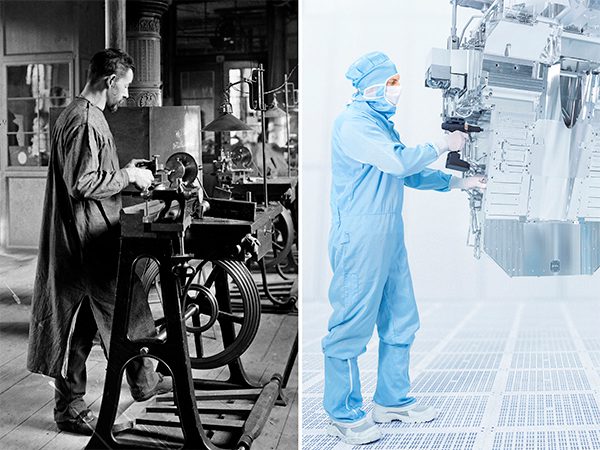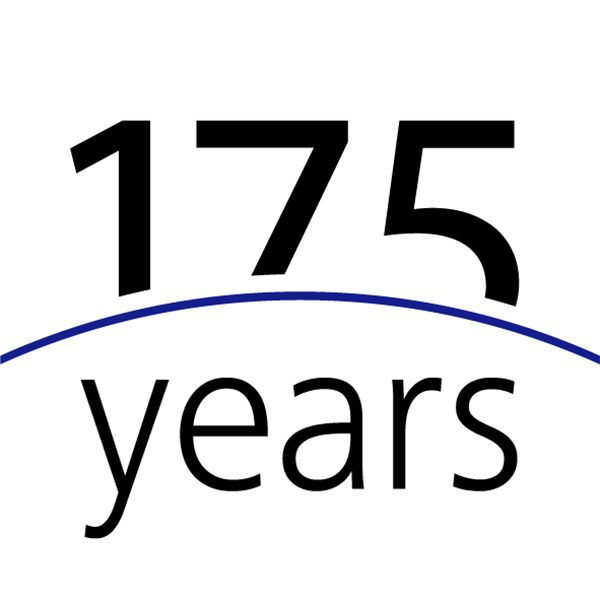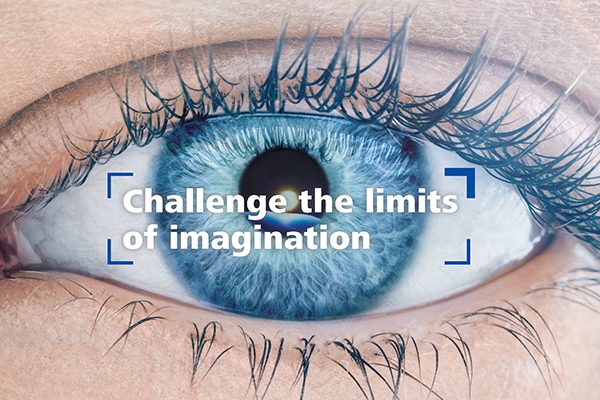ZEISS celebrates its 175th anniversary in November 2021 and looks back over a history packed with pioneering spirit, seized opportunities and new prospects.
- The company’s unwavering passion for making the seemingly impossible possible has transformed it from a modest workshop for precision mechanics in Jena to a globally recognized technology company serving tomorrow’s markets.
- Microscopy, the Moon landing, Nobel Prizes and EUV lithography are just some of the technical milestones that have helped ZEISS go down in history.
A foundation-owned company
Established by Ernst Abbe in 1889, the Carl Zeiss Foundation (a sole shareholder of Carl Zeiss AG and SCHOTT AG) is one of the largest and oldest private foundations in Germany committed to the promotion of science.
Today, ZEISS is a globally leading technology company operating in the optical and optoelectronic industries. It is divided into four segments: Semiconductor Manufacturing Technology, Industrial Quality & Research, Medical Technology and Consumer Markets.
ZEISS employs over 34,000 people in almost 50 countries. Following Carl Zeiss’ death, Ernst Abbe established the Carl Zeiss Foundation in 1889, and it remains one of Germany’s biggest foundations for the promotion of science to this day.

Technological milestones: From microscopes, Nobel Prize winners and photos of the first Moon landing through to EUV technology for digitalization
Carl Zeiss embarked on a long journey, from the first microscope he built in 1846/47 and via many subsequent steps to ultimately helping the company become a leading technology player that achieved technical milestones in its various business areas. Abbe’s scientific findings and his style of working have also been adopted in other fields of optics. This has led to the creation of all-new products, new business areas and rapid growth for the company.
The multitude of technological milestones achieved throughout the company’s history include ZEISS’ involvement in the Moon landing on 20 July 1969, which helped it redefine the limits of what is possible, with a footprint becoming the symbol of this outstanding achievement. The photos from this historic event were captured with ZEISS camera lenses that were specially developed for use in space.
2019 was also a special year for ZEISS Industrial Metrology. 100 years earlier, ZEISS first unveiled a precision micrometer screw at the 1919 Leipzig spring fair, a move that launched its legendary foray into metrology., ZEISS’ Industrial Metrology arm is a leading manufacturer of multi-dimensional measuring solutions. These include coordinate measuring machines, optical and multi-sensor systems and metrology software for the automobile, aviation, engineering, plastics, and medical technology industries. Innovative technologies like the 3D X-ray measuring machines for quality assurance are also part of the product portfolio.
ZEISS also manufactures products that make a key contribution to medical progress. The optical system for the very first slit lamp also formed the basis for the development of the first ZEISS surgical microscope, the OPMI® 1, which was launched in 1953. To this day, ZEISS is shaping ophthalmology and microsurgery in a lasting way, through its innovative technologies and application-oriented solutions. Microsurgery’s recently launched product portfolio includes technologies such as the ZEISS KINEVO® 900 used for spine and neurosurgery. Comprising more than 100 innovations and 180 patents, the system marries robotics, digital visualization, and modern assistance solutions.
After more than 20 years of intensive, collaborative development work at the international level, in 2019 ZEISS partnered with other European companies and research institutes to begin series production for a revolutionary new manufacturing technology that would yield high-performance microchips: EUV lithography. It was EUV that made ZEISS one of the drivers of digitalization. This technology enables major advances in the miniaturization, performance, and energy efficiency of chips, and hence of digital end devices and infrastructure.

Helping to shape the future
Today, ZEISS is a global technology leader and helps to advance the state of the art while using its solutions to drive the world of optics and its related fields. What safeguards the future of the company are its many success stories. For instance, ZEISS winning the German Future Prize for its EUV technology in late 2020.
ZEISS has a long tradition of high expenditure on research and development. This also represents our investment in the future. ZEISS invests over ten percent of its annual revenue in research and development – in fiscal year 2019/20, it invested 13 percent in this area.
Optical technologies are vital for making progress in the life sciences, medicine, IT, telecommunications, automobile, consumer products and many other fields. The aim of every innovation at ZEISS is to go beyond just advancing the product by benefitting society.












